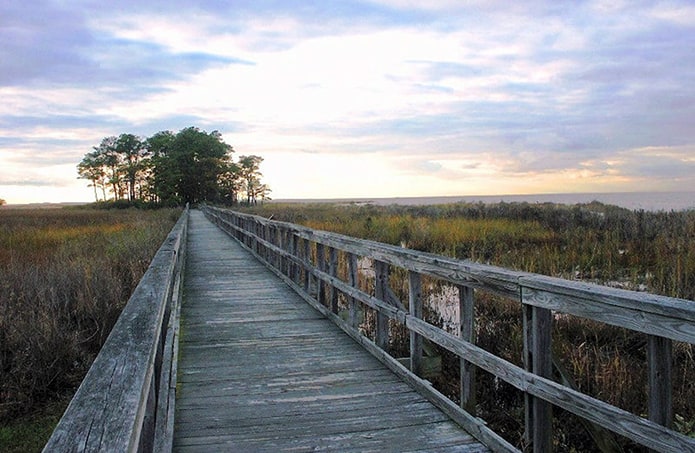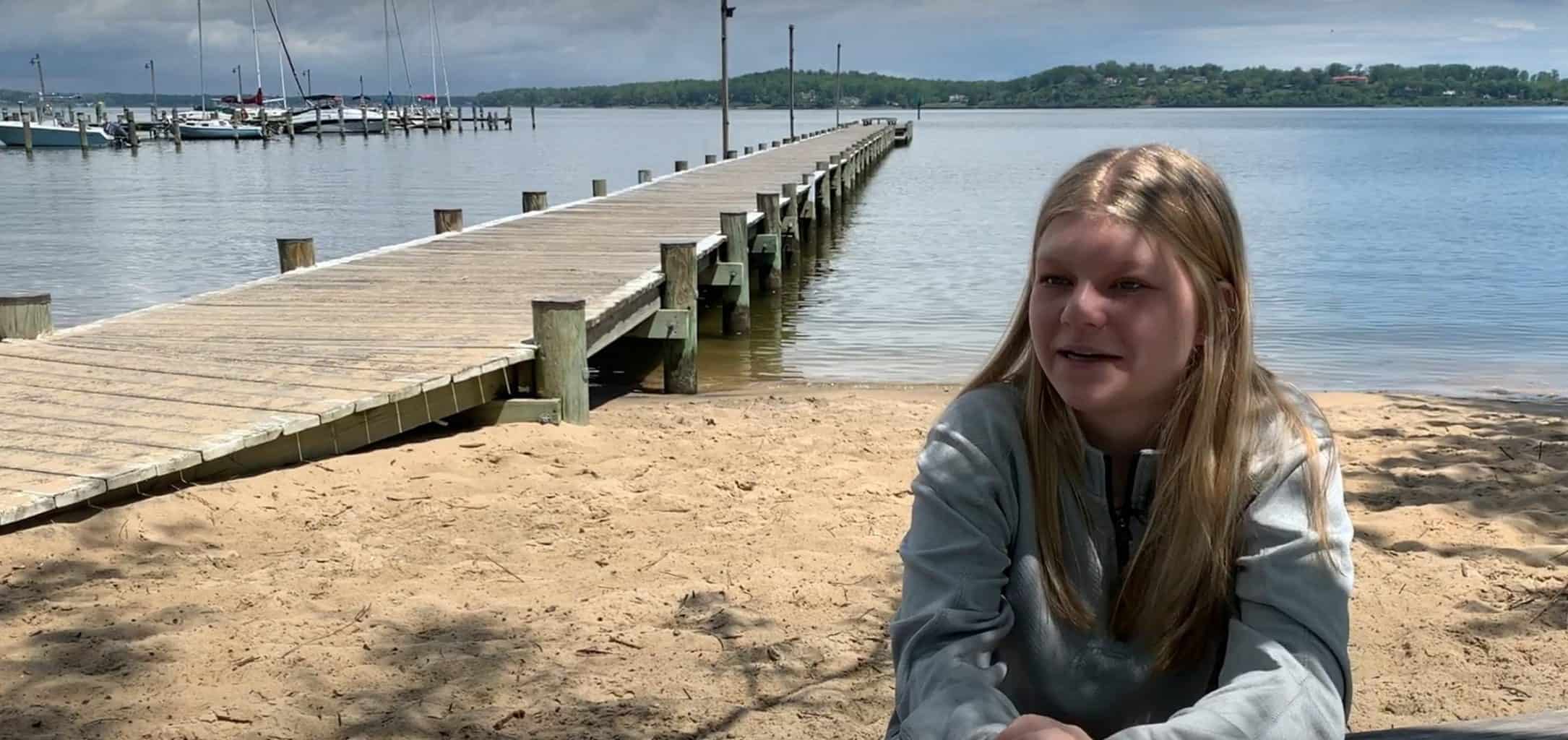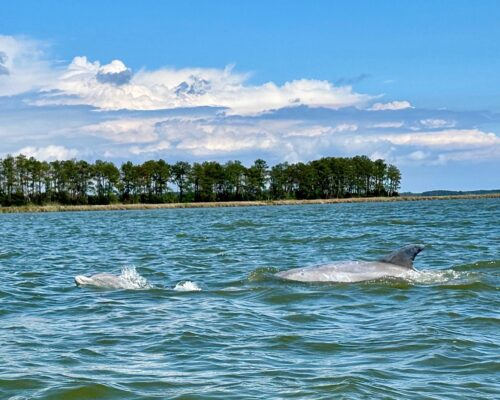By Jeremy Cox, Bay Journal News Service
The U.S. Fish and Wildlife Service is hiring a new manager at Eastern Neck National Wildlife Refuge, sparing a natural area popular with hunters, anglers and birdwatchers from at least partial closure.
The refuge, located in Maryland on the Eastern Shore of the Chesapeake Bay, was left without a full-time manager in September 2017 when that official took a job elsewhere in the Fish and Wildlife Service. Lacking funds to hire a replacement, agency officials began warning Eastern Neck supporters this summer that public access to the refuge was in jeopardy.
Although the agency hasn’t received any additional money, it announced in August that Eastern Neck will remain open to the public. That decision came about three weeks after the Bay Journal reported on the potential closure and the growing outcry from user groups and elected officials.
The refuge consists of a 2,200-acre island at the confluence of the Chester River and Chesapeake Bay. According to the Fish and Wildlife Service, about 70,000 people visit each year to catch glimpses of tundra swans and more than 200 other bird species, hunt deer and turkeys, and hike among the island’s pine trees and saltwater marsh.
“We’re very excited [about the decision],” said Melissa Baile, president of the Friends of Eastern Neck, a support group for the refuge. “I think they did not realize how much the refuge meant to the constituency and the country in general.”
Baile added that her group’s work isn’t over. Federal funding has been shrinking for the refuge system during this decade. If Eastern Neck supporters don’t stand guard, they could be facing another closure threat within a few years, she said.
To pay for the new staff member, the Chesapeake Marshlands National Wildlife Refuge Complex, a branch of the service that oversees the region’s refuges, will have to reallocate funds it had reserved for other causes, said Terri Edwards, a Fish and Wildlife spokeswoman. So far, no timeframe has been set for making the new hire.
In July, Marcia Pradines, the Chesapeake Marshlands’ project leader, told the Bay Journal there was a possibility of a full shutdown at Eastern Neck and a gate turning back visitors at the entrance. “It’s not something we want to happen,” she said at the time. “In the end, it’s a budget reality.”
The staffing decisions wouldn’t have affected access to the county road that traverses the island, Pradines said. It would have remained open to Bogles Wharf, home to a county-maintained boat ramp and small pier.
By early August, Fish and Wildlife officials softened the potential blow. The entrance gate would remain open, allowing hunting, fishing, birdwatching and “other wildlife dependent uses,” regardless of staffing decisions, they said in a message posted to the refuge’s website.
The fate of the visitor center, along with the five walking trails, two boardwalks and maintenance activities, remained in limbo.
As the agency pondered its next step, employees from the Marshlands complex’s headquarters in Dorchester County shared the refuge’s administrative work — and the four-hour roundtrip drive that accompanies it.
The all-volunteer Friends of Eastern Neck has stepped in to complete other chores. In addition to their longtime responsibility of managing the visitor center, members are helping to conduct special events and performing countless hours of repairs and upkeep across the island.
At times, the island is devoid of paid or volunteer staff, save for a lone volunteer clerk manning the front desk, said Phil Cicconi, vice president of the Friends group.
The Friends group, Baile said, wrote letters and emails to elected officials and Fish and Wildlife staff to keep their beloved refuge open. They lined up a growing list of allies in the fight, including the Kent County Commissioners, the Patuxent Bird Club and the Friends of Blackwater National Wildlife Refuge.
The movement attracted the help of Sen. Chris Van Hollen of Maryland, among others. In December, he wrote a letter to Fish and Wildlife’s parent agency, the Interior Department, calling for the position to be filled in light of Eastern Neck’s importance to Kent’s economy.
Van Hollen applauded the move to keep the refuge open. But like Baile, he counseled vigilance.
“Filling this position will help the Refuge better serve visitors, the local community, and area wildlife. I will continue working to ensure our state has the federal resources necessary to support our economy and our environment,” Van Hollen said.
Eastern Neck’s supporters also looked to Rep. Andy Harris, the Maryland Republican who represents the Eastern Shore. He is a member of the powerful House Appropriations Committee and belongs to the controlling party. Harris said in a statement that earmarking funding specifically for Eastern Neck would violate congressional rules, but that he was actively seeking other solutions.
Eastern Neck is not alone in its budget challenge.
Accounting for inflation and fixed costs, the nation’s network of more than 560 refuges receives nearly $100 million less funding today than in 2010, according to the Cooperative Alliance for Refuge Enhancement, a coalition of wildlife, sporting and conservation groups. The funding crunch has led the Fish and Wildlife Service to leave 488 refuge jobs unfilled, a loss of one out of seven positions.
“It’s a nationwide system problem. What’s happening in Eastern Neck is happening all across the United States,” said Desiree Sorenson-Groves, vice president of government affairs with the National Wildlife Refuge Association. “You can limp along for a few years, tightening your belt and no travel and, whenever somebody retires, you don’t fill the position. But at a point, you can’t do anymore.”
Over the last 15 years, national refuges across the country have been forced to shut down visitor centers or cut back on the number of days they’re open. The popular J.N. Ding Darling National Wildlife Refuge in Florida, for example, was forced to close its visitor center two days a week after it lost two park rangers to budget cuts.
In Rhode Island, the Sachuest Point National Wildlife Refuge visitor center was closed for three consecutive winters. Supporters raised money to install solar panels, cutting costs enough to allow it to open for the winter of 2008–09.
The Trump administration requested $473 million in funding for the refuge system in fiscal 2019, a 2.7 percent decrease from current spending. An Interior Department appropriations bill approved by the Republican-controlled House along party lines in July sets aside nearly $489 million, a rise of less than 1 percent. The Senate passed its own version, sending the legislation to a conference committee to hash out the differences.
“You have to understand that you can berate the administration as much as you want, but ultimately it comes down to the legislative branch — Congress — to appropriate the money,” Sorenson-Groves said.




